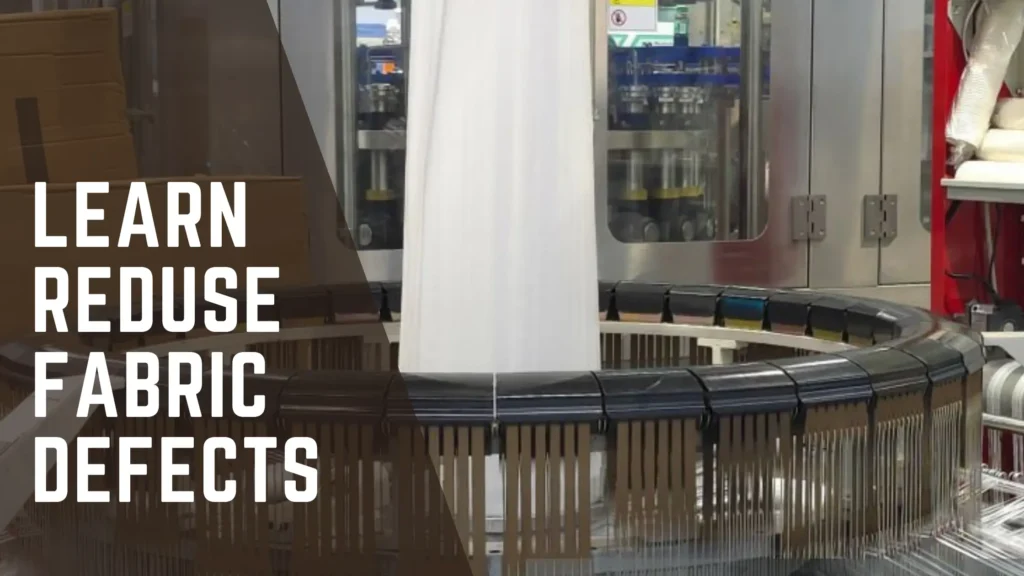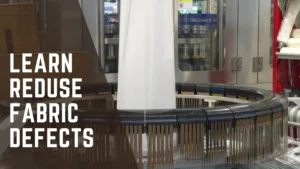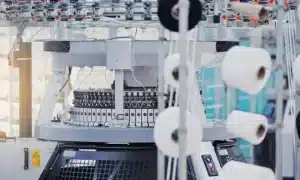In today’s time, achieving consistency, efficiency, and high-quality output in textile manufacturing is essential. One of the biggest challenges manufacturers face is how to reduce fabric defects during production.
Matrix Controls has been innovating for more than 60 years, leveraging technology to directly counter this challenge with smart solutions in fabric defect detection systems, automated fabric inspection, knit monitoring systems, and others.
In this guide, we will address the best strategies that can be used to reduce fabric defects, enhance accuracy, and ascertain traceable quality throughout the production processes.
Why It’s Important to Reduce Fabric Defects
Reduced fabric defects also mean better product qualities, better customer satisfaction, and better ROI. Defected fabric causes loss of material, working hours, and dissatisfied customers.
Having installed the newest systems including real-time fabric monitoring and Matrix MKMMS 4.0 software, you get a high level of visibility into all aspects of knitting and inspection.
Understanding the Common Types of Fabric Defects
It is important that before we examine the solutions, we should know what is it that you are trying to get rid of. The most prevalent types of fabric defects include:
- Knots and yarn irregularities
- Slubs and inconsistent thickness
- Tears and holes from poor handling or machine errors
- Color shading due to uneven dyeing
- Misprints and distorted graphics
All these problems impact not only the fabric’s appearance but also its strength and efficiency.
Root Causes of Fabric Defects in Textile Production
The causes of defects are mechanical, environmental, and human in nature:
- Misaligned or outdated equipment
- Yarn feed irregularities
- Poor-quality raw materials
- Poor monitoring during knitting
- No real-time corrective feedback
All these problems are solved at Matrix Controls with the integration of the latest control equipment like F-4000 HMI, fabric defect scanners, and our core management center- MKMMS 4.0.
The Power of Real-Time Fabric Monitoring
Fast operations require fast monitoring. Our real-time fabric monitoring system monitors yarn, formation of loops, and fabric tension. This makes it possible for immediate intervention when the fabric has a problem. This not only reduces mistakes but also increases the efficiency and productivity of the production materials.
The platform is designed to suit any type of machine whether single jersey or double jersey with our knit monitoring system installed on it. The system:
- Tracks yarn feed and loop behavior
- Sends instant alerts for yarn breakage or tension variation
- Supports uniformity of the fabrics in different output batches
- Building a Foundation for Quality
Factories will also need to concentrate on preparation and maintenance in order to reduce fabric defects. It is imperative to choose an appropriate fabric inspection machine. Our solutions are fully compatible and adjustable to different machines and production speeds.
Things to consider before installation:
- The kind of fabric that is being produced
- Brand and model of existing machines
- Compatibility to central monitoring (e.g. MKMMS)
Routine preventive maintenance is equally important. The most excellent tools cannot work as well when sensors are not in alignment or the belts are worn out.
Regular calibration, lubrication, and optimization of the functions of air control guarantees the maximum possible level of defect identification.
Reinforcing Quality Through Practice and People
No system is effective without skilled operators. Train your personnel to extract the maximum out of the technology.
The training should be centred on:
- Navigating the system dashboard
- Responding to alerts and system-generated recommendations
- Analyzing and acting on root cause analytics
Promoting ongoing learning would help improve accountability and precision in handling production errors.
Effective Textile Quality Control Strategies
Implementation of a multi-level textile quality control system also enhances your control and helps you reduce fabric defects. Matrix recommends:
- Checking of yarn before knitting
- Inline checking when the machines are working
- Post-production quality audits
The practice lessens any unexpected troubles and enables the teams to make preventive decisions as opposed to making corrective decisions.
Ways of Minimizing Fabrics Wastes in the Textile Industry
At Matrix Controls we not only assist manufacturers in reducing defects but also reduce fabric waste in the textile industry. Our systems will streamline the usage of yarns and avoid overconsumption. Such features as the yarn rate measurement allow smarter use of materials.
Recommended strategies:
- Embark on early introduction of fabric defect detection systems
- Use real-time yarn rate measurement for accuracy
- Use AI-powered analytics to identify repeat problems
The use of less waste reduces operational costs and a sustainable production environment.
Data-Driven Decisions for Quality Excellence
By having MKMMS 4.0, manufacturers are able to check on the performance metrics, establish set benchmarks, and determine the trends. One can use production data to:
- Identify any reoccurring problems on the particular machines
- Establish targets for quality improvement
- Check performance of staff and machinery
This proactive approach transforms data into decisions, improving your ability to consistently reduce fabric defects.
Smarter Systems with AI and ML
Artificial Intelligence is an essential part of textile production quality monitoring today. The intelligent systems provided by Matrix categorize flaws, anticipate equipment failure, and make suggestions on where the machinery can be improved with automatic intelligence.
- Advanced functionalities include:
- AI-driven defect classification
- Predictive maintenance planning
- Scoring system performance automatically
Final Thoughts
If you are determined to reduce fabric defects, manufacturers must move beyond traditional inspection methods and embrace smarter systems. Matrix Controls offers comprehensive solutions that combine real-time monitoring, AI-driven analytics, and seamless machine integration. From fabric scanning, and yarn rate measurement to defect prevention software, our goal is to help you produce high-quality, waste-free fabric consistently.
Embrace the future of textile manufacturing with Matrix Controls where quality, efficiency, and innovation meet.
FAQs
Q1: What are the ways through which Matrix Controls can minimize defects on fabrics?
- By offering integrated solutions such as automated fabric inspection, knit monitoring systems, and real-time analytics via MKMMS 4.0.
Q2: What makes automated inspection more reliable than manual?
- Our fabric defect scanners eliminate human error and provide instant alerts, improving speed and precision.
Q3: Can Matrix’s systems integrate with any knitting machine?
- Yes. Matrix products are compatible with any machine brand and thus are easily integrable.
Q4: What is MKMMS 4.0 and why is it important?
- It’s our advanced web-based software for monitoring, analyzing, and optimizing textile production in real time.
Q5: Does Matrix help reduce fabric defects?
- Absolutely. Our systems are built to reduce fabric waste in the textile industry through precision monitoring, AI insights, and proactive alerts.




